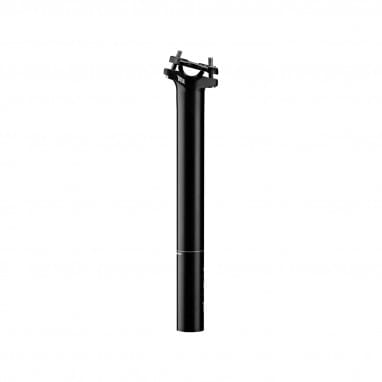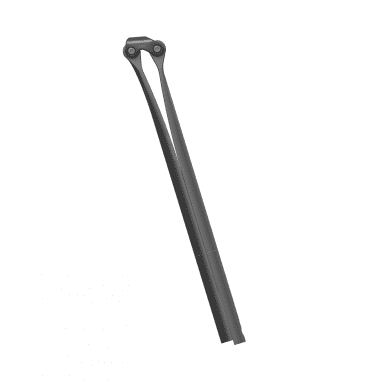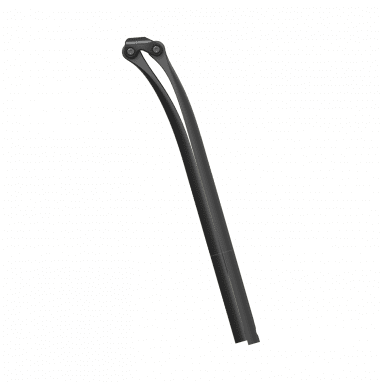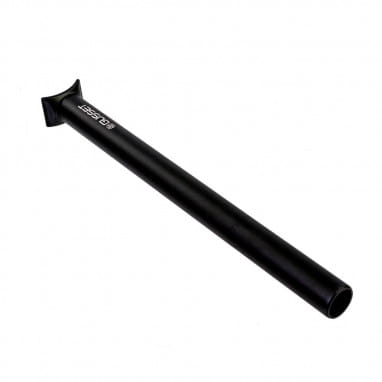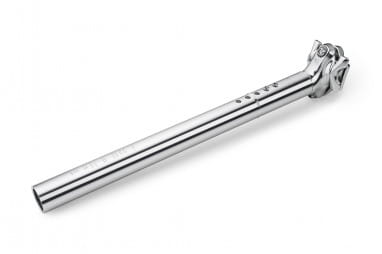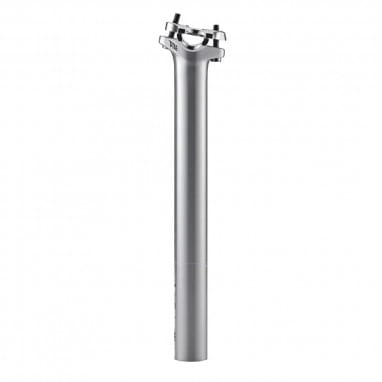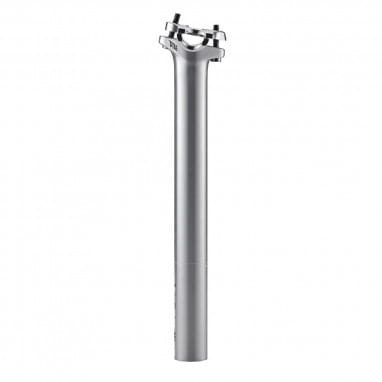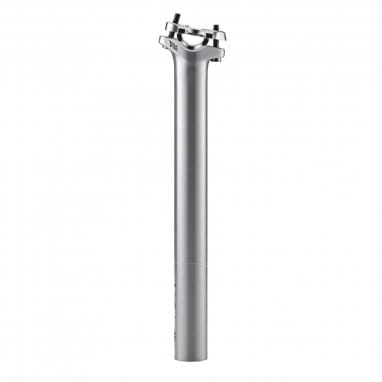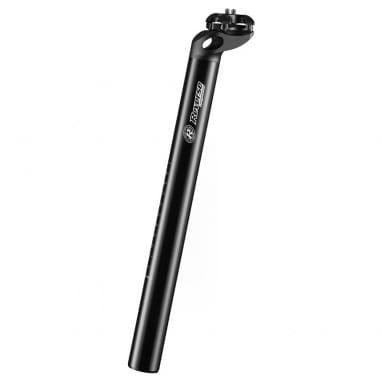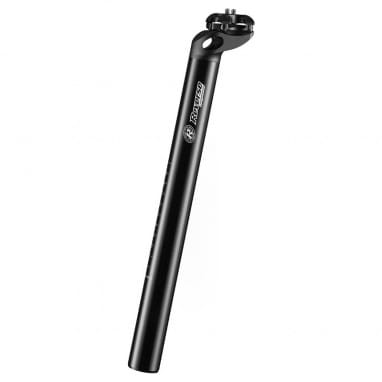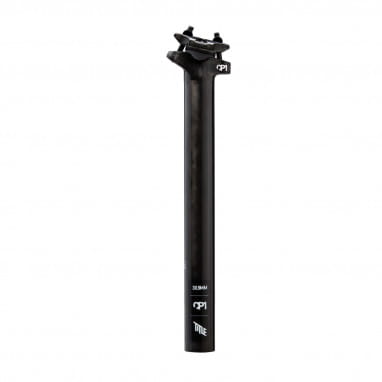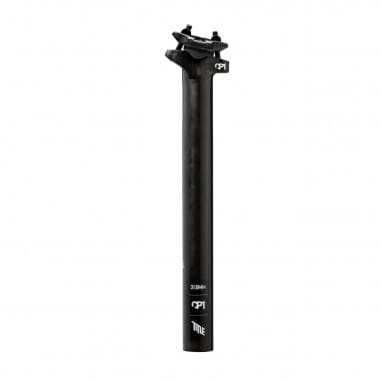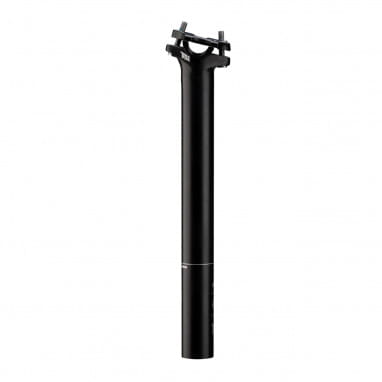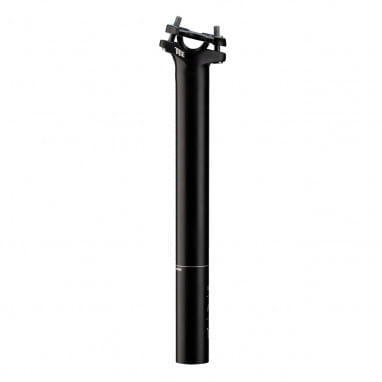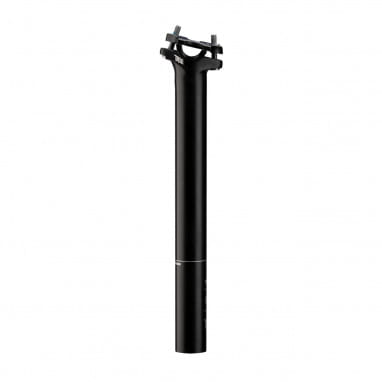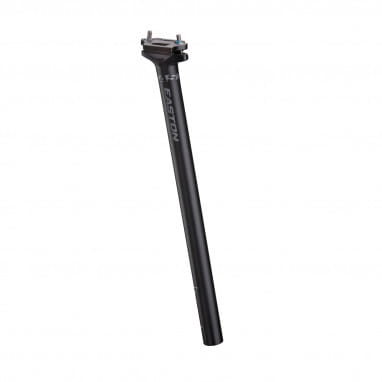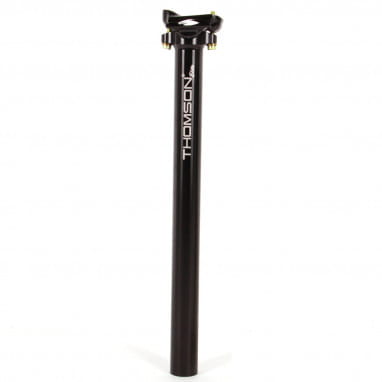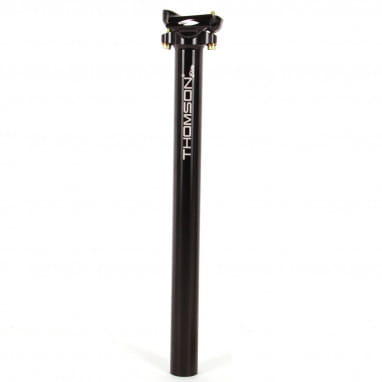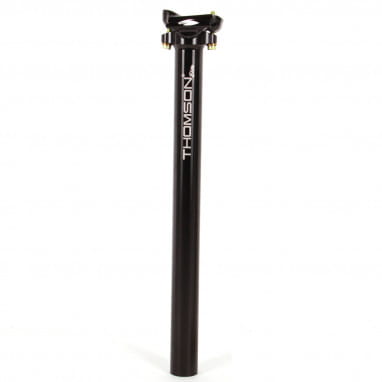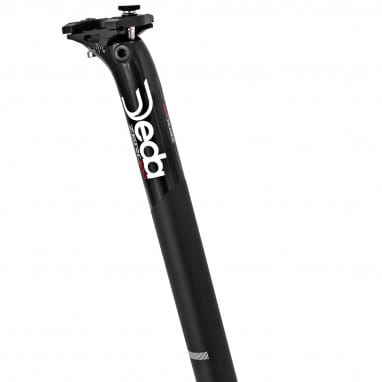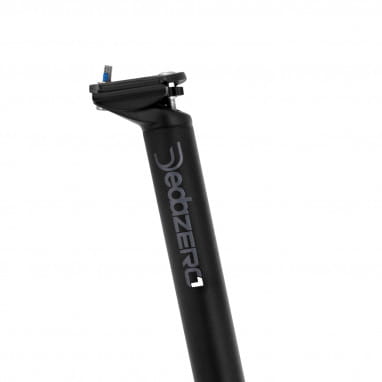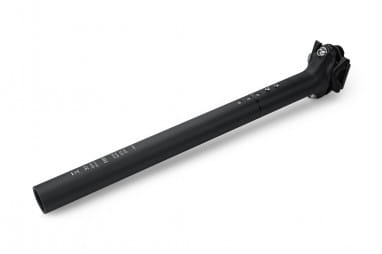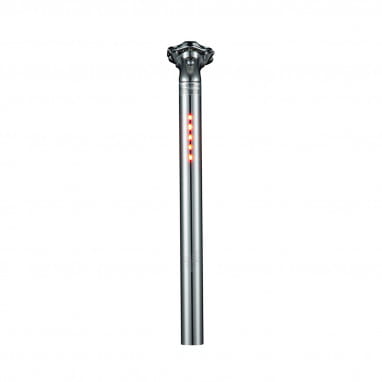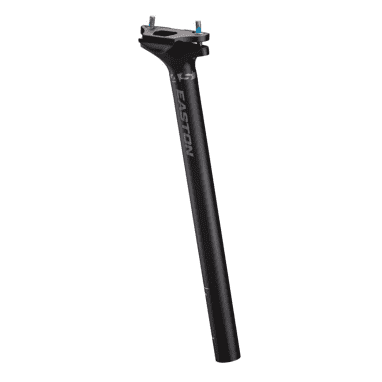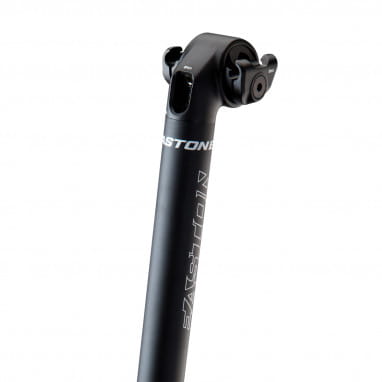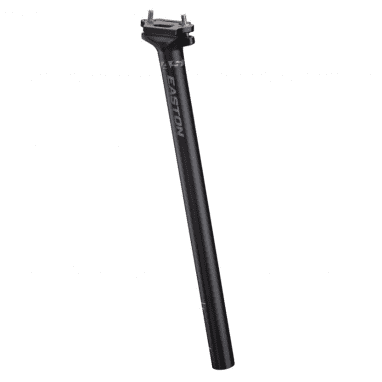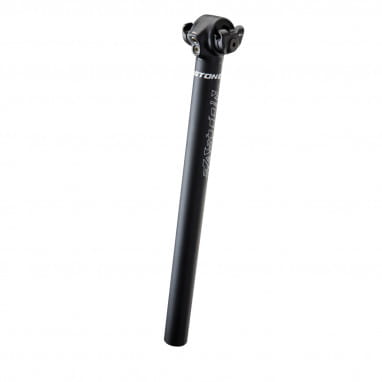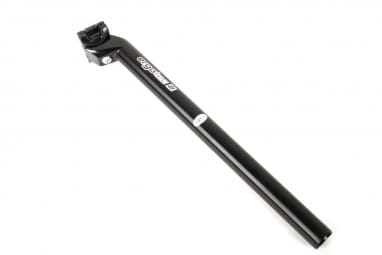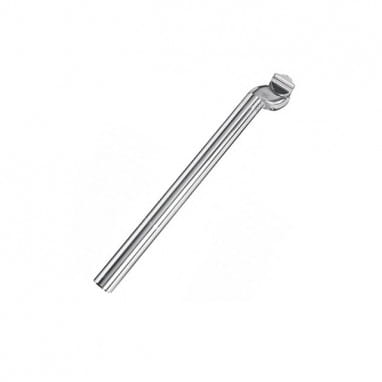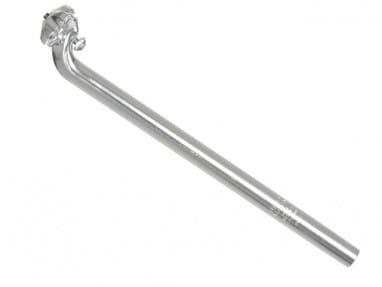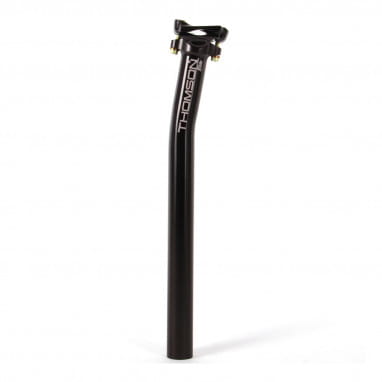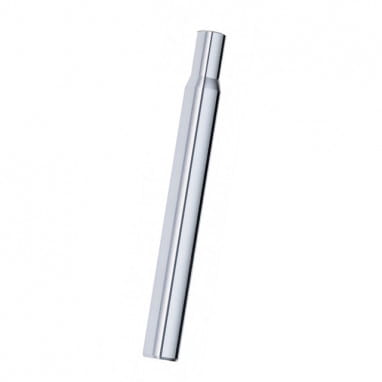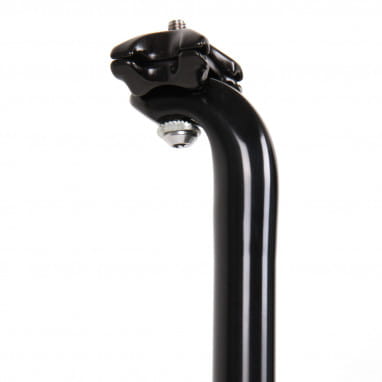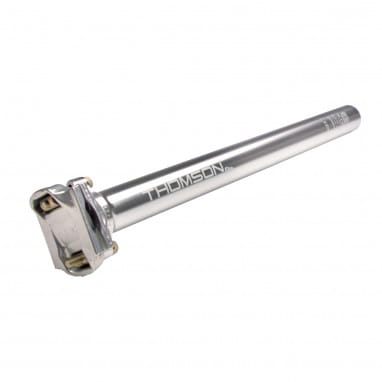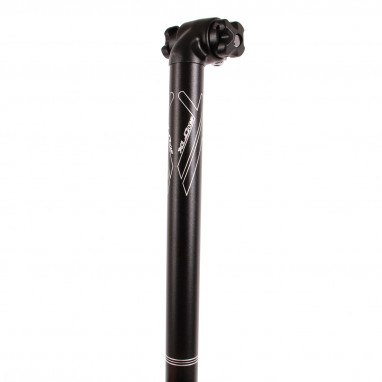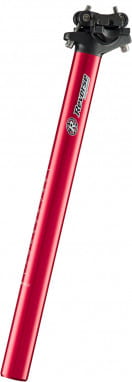Somehow the saddle must to the bike - sounds simple, but it is not! Because the seat should of course be firmly mounted and not wobble or slip. On the other hand, it must be adjustable in height, because only then can a bike be adjusted for different stride lengths. And that's exactly why every bike, whether trekking bike, city bike, road bike or MTB, has a seat post. Rigid seatposts today are usually patent seatposts, here you can learn what makes them so patent.
.
In order for you to feel really comfortable on your bike and deliver top performance, it has to fit your anatomy well - especially your leg length. In fact, however, the frame size of a bike is only a rough approximation, so really fit the bike only when the saddle is adjusted to the correct height. And that only works thanks to its flexible seatpost.
By the way, this adjustment option is quite important for the children's bike. Here the seatpost ensures that you do not have to buy a new bike every few months, because the little ones have done a shot in the height! You can adjust the saddle by a few inches, so the kids bike will fit for quite a while.
How a seat post works
.
On top of the seatpost sits the saddle clamp. There, the two rails (stirrups) of the saddle are fixed with a clamping plate. The saddle clamp is firmly mounted on a rod, it disappears partially in the seat tube (this is the tube of the frame that leads from the bottom bracket to the saddle). The height of the saddle is therefore flexible, you can determine how much of the seat post is in the seat tube. With a saddle clamp the seatpost is then locked in the frame. But beware. So that the seat post finds a firm hold in the seat tube, the minimum insertion depth must not be undercut! Most seatposts have a marking, which tells you how far they may look out of the seat tube.
This is how the seatpost affects your riding position
.
Naturally, the bike frame must fit you as well as possible, but various components are responsible for fine-tuning the seating position. In addition to stem and handlebars, the seatpost is one of them. So if your new bike is a bit uncomfortable, you can counteract with these components and adjust Stack and Reach to your needs.
The seatpost offers these options:
- You can slide the saddle slightly forward or backward before tightening the bolts. In this way, you can determine the position in which your saddle feels most comfortable. This creates more or less distance to the handlebars.
- Depending on the design of the saddle base, this also changes its tilt.
- Theangle at which the saddle clamp sits on top of the seat post affects the angle of the saddle and thus the seating position.
- A seatpost with offset is bent backwards, so the saddle moves quite a bit further away from the handlebar. In the article description you will then usually find a specification that tells you how much offset (or English: setback or offset) the seatpost has. There is then, for example, "Setback 20mm".
- The most obvious way to customize your bike is, of course, to adjust the saddle height.
- As your riding position and saddle height change, so does the angle at which your legs work! This can lead to a more efficient use of power.
What is a patent support?
On retro bikes you may still find some, in modern bicycle construction they have disappeared - meant are Kerzensattelstützen. Here, the actual seat post and the seat clamp were two individual parts. The slightly thinner upper end, called "the saddle candle", was connected to the saddle with the help of the saddle clamp - however, this system was not particularly stable. All "normal" rigid seatposts are therefore today patent posts. Saddle clamp and support are here firmly connected to each other. Thus, the once set height and inclination of your saddle holds reliably.
What is a flex post?
You're in the rigid post department, so what are "flex posts" doing here? Simple. These seatposts have no special components that provide damping, so they are rigid in terms of construction. But the material of the entire post is somewhat compliant. "Undirectional carbon" makes it possible, it consists of rectified fibers, they can be absolutely unyielding in one direction (in the case of a seatpost vertical), in another direction (here: vertical) they provide some flex and thus damping.
Which seatpost for road bike, mountain bike or city bike?
From time to time, seatposts are assigned to different types of bikes. Suspended seatposts for the comfort zone trekking and City, Dropper Posts for MTB and rigid supports to the road bike. Somehow logical, but not really right! There are manufacturers who designate their seatposts for a specific type of bike. Of course, particularly stiff, lightweight carbon seatposts are gladly driven on the road bike and on the DH bike and Enduro makes a sturdy, durable aluminum variable support more sense than on the trekking bike - but is not a must.
Often you will also find divisions according to the thickness of the seatpost, then 25.4mm or 1 inch are recommended for city bikes, larger calibers from 31 mm for mountain bikes and medium sizes around 27.2mm for road bikes and trekking bikes.
But if the diameter and the installation length fit, you can in principle start with any seatpost.
Which rigid seatpost fits your bike?
Which seatpost fits which bike is mainly a question of tube diameter and length. Here's how to find out which seatpost fits your frame:
- You need to know the inner diameter of the seat tube, for this you need to loosen the saddle clamp of your bike and remove the existing saddle including seat post. With a meter measure you can now determine the inner diameter. If you have a measuring caliper (you can order one from our measuring tools) the removal is not necessary, so you can measure the existing seatpost. With any luck, the size is also simply on the old seatpost.
- If you click the filter "Diameter" on the left, you see how many different outer diameters there are. You can just choose the one that fits your frame. From 25.0mm to 32.4mm ( the increments grow by 0.2mm each) - we have plenty to choose from here in the store.
- Many models are available in different thicknesses! You can then during the ordering process in the window on the right to select the appropriate diameter before you put the item in the cart.
- In addition to the diameter, the length is an important parameter. How long your seatpost should be depends on your body size and frame geometry. Simply add the targeted seating position to the insertion depth, then you can filter for the appropriate length.
Do you have a torque wrench?
When you buy a new seatpost, there is another important figure: the torque with which you should tighten the seat clamp. It does not play a role in the purchase, but should be observed during installation, so that the saddle holds well on the one hand, but on the other hand the material is not damaged by too much force. Especially with bike frames and seat posts made of carbon, the use of a torque wrench is absolutely recommended here!
When your seatpost gets a light...
Whatever bike you ride, if you want to ride it in the dark or in the territory of the StVZO, it needs red taillights. Companies like Light Skin build seatposts with integrated red LED lights that make you highly visible. Charging is via micro-USB.
Now you can start looking for the perfect seatpost for your bike. With lighting or without, aluminum or carbon, different sizes and even different colors, cheap or particularly noble ... there are many choices here in the online store. If you prefer to buy a variable seatpost or a suspension seatpost, we also have them in stock! And of course you can also find the necessary accessories, a comfortable saddle and saddle clamps for mounting on the frame.
